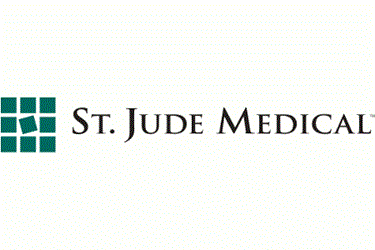FDA Approves St. Jude Medical's BurstDR Therapy For Chronic Pain
By Jof Enriquez,
Follow me on Twitter @jofenriq

St. Jude Medical says the U.S. Food and Drug Administration (FDA) has approved the company's BurstDR technology, a new type of spinal cord stimulation (SCS) that mimics the body's nervous system in firing intermittent "burst" pulses to alleviate chronic pain.
BurstDR therapy is now available for patients receiving new implants of St. Jude's internal pulse generators Proclaim Elite and Prodigy MRI SCS systems, and soon, for upgradeable Protégé and Proclaim implants.
In a device profile for the Prodigy device, Prof. Dirk De Ridder and colleagues described burst technology as "a novel waveform that consists of closely spaced high-frequency electrical impulses delivered in packets riding on a plateau, and followed by a quiescent period. Its inception was based on mimicking burst firing in the nervous system and usually delivered by unmyelinated fibers that uniformly have a motivational affective homeostatic function. It thereby targets a multimodal salience network, even though the stimuli are delivered at the level of the spinal cord."
De Ridder, who filed the original patent for burst technology in 2004, says he is excited that patients in the U.S. can now avail themselves of burst technology, after it has benefited many patients in other parts of the world.
"When I developed BurstDR stimulation my goal was to introduce an entirely new therapy option, and one that was rooted in the natural way in which the human body responds to and combats the sensation of pain," he said in a news release.
The prospective, randomized, multi-center SUNBURST (Success Using Neuromodulation With BURST) Study successfully demonstrated the safety and efficacy of the Prodigy system with burst stimulation for the treatment of chronic intractable pain of the trunk and/or limbs, according to St. Jude Medical.
Data showed that 69.4 percent of participants preferred burst stimulation over tonic SCS in reducing pain. Further, 91 percent of patients reported a decrease in paresthesia during treatment, while 65 percent said they did not experience paresthesia while receiving burst stimulation.
"BurstDR stimulation offered superior pain relief over traditional SCS and that the therapy was preferred by most patients over traditional SCS therapy," the company says.
Often defined as any pain lasting more than 12 weeks, chronic pain affects approximately 1.5 billion people worldwide, more than heart disease, cancer, and diabetes combined.
“Chronic pain is one of the most costly epidemic diseases facing health care systems worldwide, and one of the most challenging for physicians to manage due to the complexity of the condition and the differences in each patient’s clinical case,” says Allen W. Burton, M.D., medical director of neuromodulation and VP of medical affairs at St. Jude Medical. “With FDA approval of BurstDR stimulation, we are empowering physicians with a new therapy option in their fight against widespread chronic pain, and our goal is to continue to improve patient outcomes and get more patients the pain relief they deserve.”
St. Jude Medical, which is in the process of being acquired by Abbott, claims itself to be the only medical device manufacturer in the world to offer radiofrequency ablation (RFA) and spinal cord stimulation (SCS) therapy solutions, including BurstDR stimulation and stimulation of the dorsal root ganglion (DRG) for the treatment of chronic pain. It competes with Medtronic, Boston Scientific, and a handful of smaller device companies, who also are working on technology to mimic natural nerve impulse patterns.
